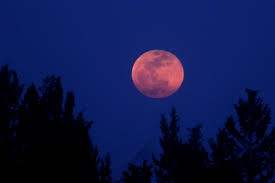Subtotal $0.00
Lupane, Zimbabwe, On the evening of September 7, 2025, Zimbabwe was treated to a breathtaking total lunar eclipse, a celestial spectacle that not only captivated the eyes of many but also stirred a rich tapestry of interpretations across the nation. As the Moon passed completely into the Earth’s shadow, the event elicited responses that ranged from ominous cultural warnings to scientifically grounded explanations, highlighting the profound impact of such astronomical phenomena on human perspectives.
For traditionalist Kholwani Mthombeni, the eclipse was imbued with a sense of foreboding. He remarked, “This is a sign that something bad is going to happen, especially when someone significant will die. Lunar eclipses have always been linked to major occurrences in human affairs.” Mthombeni’s viewpoint reflects a deeply entrenched cultural belief in Zimbabwe, where celestial events are often seen as harbingers of significant change or turmoil. This sentiment resonates with a long-standing tradition that views the cosmos as intimately intertwined with the human experience.
In stark contrast, Margaret Mpengesi, a devout Christian, perceived the eclipse through a religious lens. “This eclipse is one of the signs of the end times as mentioned in the scriptures. We must prepare spiritually for what is to come,” she asserted. Her interpretation underscores the manner in which celestial events can reverberate with religious narratives, weaving together themes of prophecy and existential readiness. Such reflections highlight how deeply embedded spiritual beliefs shape individual and collective understanding of the universe.
It’s just one of those events that happen occasionally. There’s no need to read too much into it,
Conversely, Mzwandile Khoza, a zodiac enthusiast from South Africa, adopted a more detached stance, viewing the eclipse as a mere natural occurrence. “It’s just one of those events that happen occasionally. There’s no need to read too much into it,” he stated. Khoza’s perspective reflects a modern, perhaps scientific or astrological approach, which regards the eclipse as a routine cosmic phenomenon devoid of any supernatural significance. This pragmatic viewpoint illustrates the diverse ways in which people relate to and interpret the cosmos, often informed by contemporary beliefs and understandings.
From a scientific standpoint, a total lunar eclipse occurs when the Earth is perfectly positioned between the Sun and the Moon, casting its shadow upon the lunar surface and obstructing sunlight. During the total phase of the eclipse, the Moon transforms into a striking reddish hue, colloquially referred to as a “blood moon.” This captivating color is the result of Rayleigh scattering in the Earth’s atmosphere, which filters out blue light while allowing red light to refract onto the Moon, creating a dramatic visual experience.
In Zimbabwe, the eclipse commenced around 5:31 PM local time, with totality gracing the skies from approximately 7:30 PM to 8:52 PM CAT. For over three hours, the Moon was fully immersed in the Earth’s umbra, with the total phase lasting more than an hour. As the skies turned a vivid red, the spectacle drew collective awe and wonder, prompting a multitude of interpretations from the public, each reflecting the diverse cultural landscape of Zimbabwe.
The lunar eclipse of September 7, 2025, serves as a poignant reminder of how a single celestial event can evoke a spectrum of responses from disparate communities. From ancient cultural fears and religious symbolism to modern scientific understanding and casual observation, the eclipse illustrates the complex interplay between humanity and the cosmos.
The mechanics of a lunar eclipse are rooted in the principles of astronomy—occurring when the Earth aligns directly between the Sun and the Moon, thereby casting its shadow—the myriad interpretations of such an event reveal much about human nature. The Moon’s transformation into a reddish orb during totality is not merely an astronomical phenomenon; it is a canvas upon which cultural narratives, spiritual beliefs, and scientific inquiry converge. As we look to the skies, we are reminded that celestial events continue to resonate deeply within the human psyche, inspiring awe, fear, and contemplation of our place within the vast universe.














